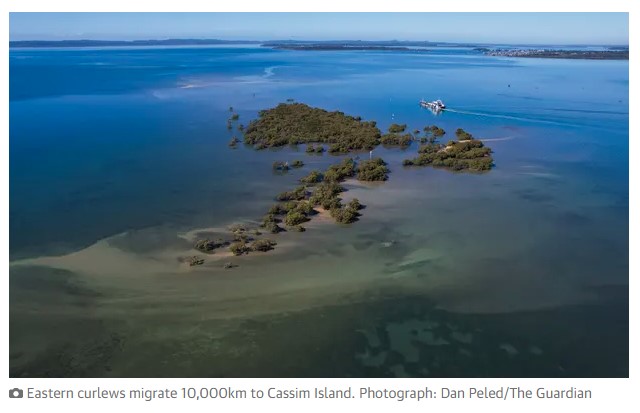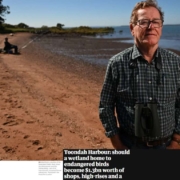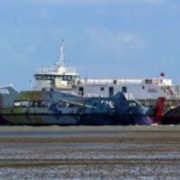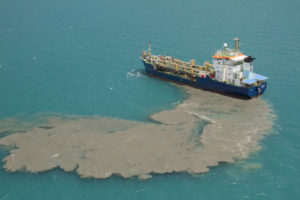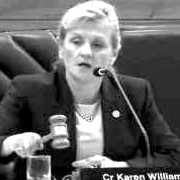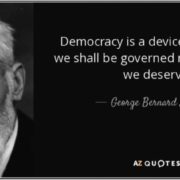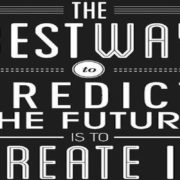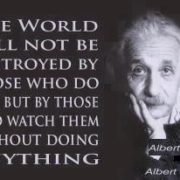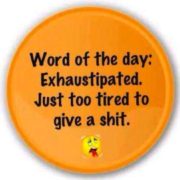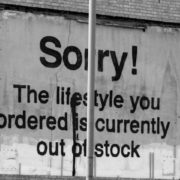What is undecided is what to do about the harbour.
I’m going to argue that Toondah Harbour doesn’t need renovating, it needs relocating. The present location is unsafe, unsound environmentally, unsightly and uneconomical.
Toondah is Unsafe
Look at old photos and maps of the area from a century ago and you won’t see Toondah Harbour, which opened in 1964. You’ll see instead 4 public jetties on Cleveland Point, two on the west side and two on the east. Built out to deep water to take the early steamers that used to ply the Bay, the ones on the East side gave protection in westerly winds, while the ones on the west provided a safe landing with onshore winds.
I’ve taken commercial vessels into Toondah on three occasions. The first was in 1985 and the next two were in 1991. On each occasion it was to help take passengers to Straddie due to water taxis or barges going aground.
Why do more vessels go aground here than anywhere else in Moreton Bay?
It’s not incompetent skippers. The approach via Fison channel is exposed, very narrow and shallow and is difficult to navigate in strong winds, and with drying banks either side at low tide there is no margin for error.
The barges and catamarans that use this channel are all shallow draft vessels. They have a lot of boat above the water and not much below, which makes them vulnerable to being blown off course in strong cross winds. This is particularly the case when they’re lightly laden and going slow, when it’s easy to lose steerage.
This has resulted in many ferry groundings over the years, the last one in December 2015 that left 200 passengers stranded for several hours till after nightfall. Also Toondah harbour itself gets a little protection from nor’easters from Cassim Island but is wide open to south-easterly winds.
Toondah is Environmentally Unsound
The Fison channel needs constant dredging which kicks up mud. As Dr Charlie Veron – one of the world’s leading marine scientists – tells us, this is a killer of all marine creatures from the tiniest crustaceans to dugong and turtle, as it interferes with digestive and reproductive systems. It also plays havoc with coral beds, seagrass meadows and bird-feeding grounds.
Mud killed several thousand hectares of seagrass meadows in the southern bay as a result of land clearing in the last half of the 19th century. Mud killed about 2,000 hectares of diverse coral beds around St Helena and Mud Islands from dredging the Brisbane River in the 1st half of last century.
It’s not just acid sulphate soils that become toxic in a marine environment. According to Charlie, silt is not harmful until it is disturbed. Stirred up, the sediment is oxidised and turns acidic and then becomes deadly to all marine life. All soils become toxic in a marine environment when disturbed, and there’s plenty of disturbance at Toondah from the constant dredging of the Fison channel plus 6,000 barge/ferry trips annually. Mud from dredging and from prop wash is currently killing over 50 hectares of coral beds around the entrance channel to Toondah Harbour.
The Fison Channel cuts across a wetland featuring sandbanks, mudflats and mangroves which provide important habitats for fish, crustaceans, dugongs, turtles and many endangered shorebirds. The marine and coastal area around the harbour has international significance and form a vital part of the Moreton Bay Ramsar site. See this link for excellent video on endangered shorebirds that feed on the mud-banks near Toondah.
Toondah is Uneconomical
Those four jetties were built for the larger steamers of the day that brought visitors to Cleveland. Bay cruises working out of the Brisbane River still happen today with vessels such as the Queenslander, Lady Brisbane and the Miramar. But they can only go to the recently refurbished jetties at Scarborough or Redcliffe. These old timber vessels are well over 25 metres, which is too long, and they have too deep a draught to get into Toondah or Raby Bay harbour. Some of these cruises are taken one way with a steam train return. Apart from Amity, there are now no jetties suitable for these vessels to land south of the river until they reach Southport. Such bay cruises are very popular and Cleveland is missing out.
Toondah is Unnecessary
The team of planning and marine specialists in the 2 day workshop in 2014 said that one of the ideas worth investigating was for a Straddie departure point to be considered on the western side of Cleveland Point. An area that already is oriented towards boating facilities with VMR and the Redlands Boat Club.
There is an existing channel that services this area and does not cut across any environmentally sensitive zone. It could easily be widened and deepened to accommodate commercial craft.
Space also exists for the provision of a wider ramp for the barges and a public jetty.
There is also plenty of space to the west, east and south of this area for car parking and other infrastructure.
I’m not aware of any research done on alternative siting options for Toondah. PDA’s appear to be deliberately set up to short circuit wise consideration such as feasibility studies and environmental impact statements, but this is what’s required. However, a comparison can be made between the two sites – Toondah and the west side of the point – by looking at their Marine Park zoning status.
In 1996, as a committee member of the Qld Commercial Vessel Association, I was invited to a meeting by the new Marine Park authority to discuss the drafting of the Moreton Bay Marine Park Zoning Plan
At that meeting we were told that they’d prefer the entire area from the East side of Cleveland Point all the way down to Pt Halloran to have the highest protection due to coral beds, seagrass meadows, and Ramsar wetlands for endangered shorebirds. However, they were unable to give it this protection due to Toondah Harbour and the high volume of traffic using the Fison Channel.
They also wanted to declare it a go-slow area for all boats as it was a turtle and dugong habitat. This they were also unable to implement because shallow draft vessels like barges and catamarans become difficult to keep on course at slow speed due to loss of steerage and directional stability.
Boat strikes are very common in this area. Not just dugong and turtle but a Southern Right whale, an endangered specie and a type which often visit this area, was struck and killed by a ferry in 2014.
In 1997, the Moreton Bay Marine Park was gazetted and the area immediately to the south of Fisons was given the highest protection and the area to the north made a Habitat Protection Zone, which affords the third highest protection, with some parts given inshore reef status. It is not the protection it deserves and it is not a go-slow area and boat strikes are common.
If the harbour was relocated as suggested this area would rejuvenate. Given the chance, nature repairs its ravages. Earlier this year Marine Park rangers went crabbing and fishing in some of the Marine Park areas of the bay that have been closed off for 20 years. Take a look at their website to see the size of crabs and fish caught.
There used to be coral beds immediately to the west of the point also, but the dredged mud from the Raby Bay canal development killed that off in he 1980s. Now charts show the whole area north of the canals to be an anchorage area, which has the lowest environmental protection status of all.
According to the marina design consultant, John Mainwaring, ‘it is far more suitable for the harbour facilities to be located on the northern side where there has been human intervention and is protected from southerly weather and has a northerly aspect’.
Disadvantages
This new location will mean a slightly longer ride to Straddie (just 1 kilometre) and add just 3 minutes to the journey time for the barges and half that for the catamarans. It will also increase vehicular traffic along the road to the point and will entail building a multi-story car-park.
But look what a relocated harbour gives us:
- It overcomes the need for any development of any kind at Toondah, particularly the damaging reclamation of Moreton Bay for 4,500 units
- It will enable the Toondah marine environment to rehabilitate and achieve full Marine Park status
- It preserves one of the oldest green reserves in Queensland, the G J Walter Park
- We can promote the area’s unique colonial history, conserved in its original setting
- The grand view is preserved for the Grand View Hotel – the oldest and best pub in Queensland
- It will provide a safe all-weather harbour with no risk of grounding
It also gives the Redlands an historic, bayside parkland with views and breezes intact that will stretch from the Grand View Hotel all the way down to include the ugly and dysfunctional Toondah Harbour site and carpark. With a mangrove boardwalk and bikeway, it could go through to the Nandeebie and Oyster Point Parks.
Redlands is short of good parkland. This bayside reserve can become the City’s unique focal parkland that will provide a premier site for events and festivals.
We should insist this option be given consideration.
Graham Carter
